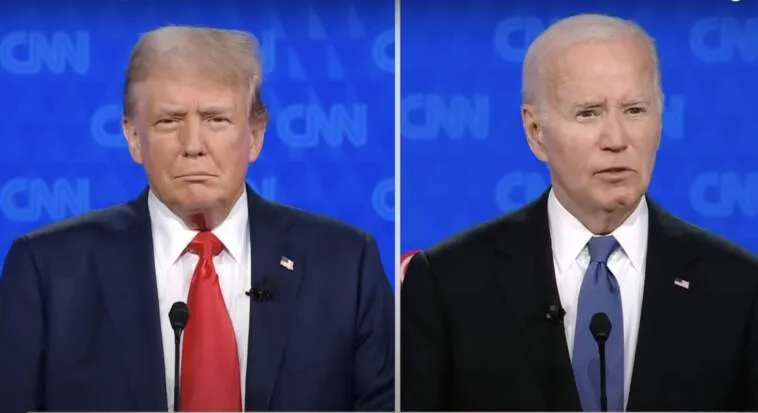(New York Post) Projection is blaming someone else for your own bad behavior.
We saw a classic case of projection in Thursday’s presidential debate, when President Biden — who is overseeing annual budget deficits of $2 trillion — asserted that his predecessor, Donald Trump, added more to the federal debt than anyone else.
It’s part of the latest leftist argument: that if Trump wins the election, he will run deficits twice as large as Biden would.
Debate moderator Jake Tapper joined the chorus of federal finance falsehoods when he claimed Trump had “approved $8.4 trillion in new debt,” while Biden’s actions will increase the debt by (merely) $4.3 trillion over a decade.

Tapper was referencing a recent report by the left-leaning Committee for a Responsible Federal Budget, which twisted and turned the debt statistics in every contortionary way it could to reach its incredible conclusion.
CRFB, by the way, is a group that opposed the successful Trump tax reform in 2017 — yet supported several of Biden’s multitrillion-dollar spending bills.
It’s not nonpartisan, but a front group for the policies of the political left.
The fundamental flaw of the CRFB analysis is revealed if we examine the projections of the Congressional Budget Office.
The CBO’s projection for 2021, the last fiscal year of the Trump administration, forecast the federal debt to reach about $35.3 trillion by 2031, that is, over the next decade.
Today, 3½ years into the Biden administration, the latest estimates from the CBO project the debt will hit over $42.5 trillion by 2031.

In other words, the CBO now expects the debt to be $7.2 trillion higher than it had projected when Trump left office — all because of Biden’s reckless spending policies.
Treasury Department figures also show the debt growing much faster under Biden.
Over Trump’s entire term, including the 2020 spate of emergency COVID spending, the debt increased by $7.7 trillion — a staggering total, to be sure.
However, about 15% of that debt total was the result of Treasury’s choice to keep additional cash on hand during the pandemic.






